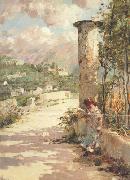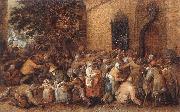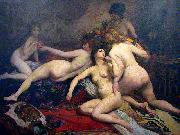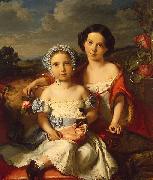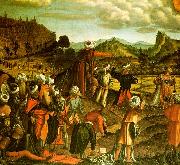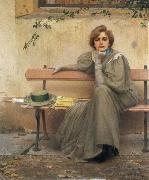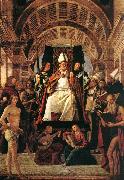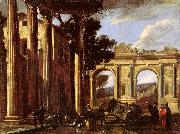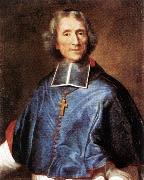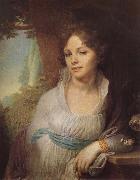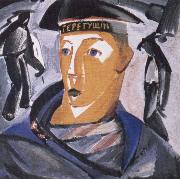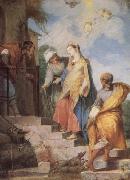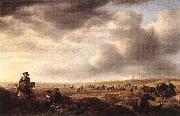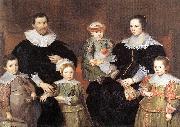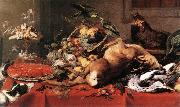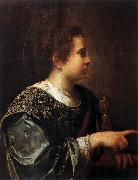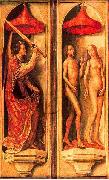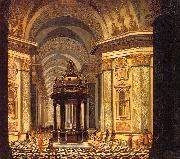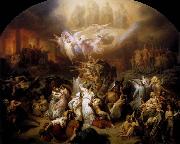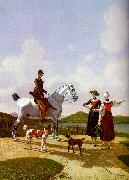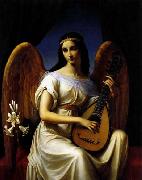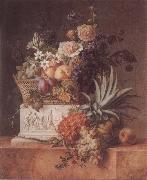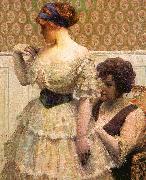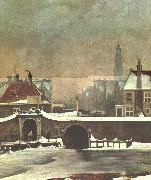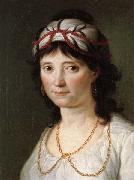|
|
|
|
|
|
|
|
|
|
 |
VITALE DA BOLOGNA
|
|
Italian Gothic Era Painter ,
b. 1289/1309, Bologna, d. 1359/69, Bologna |
|
|
|
|
|
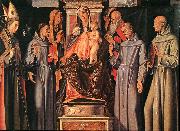 |
VIVARINI, Alvise
|
|
Italian Early Renaissance Painter ,
b. 1445/46, Venezia, d. 1503/5, Venezia |
|
|
|
|
|
|
|
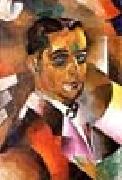 |
Vladimir Baranov-Rossine
|
|
(1888?C1944) was a Russian-Ukrainian painter, avant-garde artist (Cubo-Futurist), and inventor of Jewish ethnicity
Vladimir Baranov-Rossine was born in Kherson, Ukraine, to parents of Jewish ethnicity.
In 1902 he studied at the School of the Society for the Furthering of the Arts in St. Petersburg. From 1903 to 1907 he attended the Imperial Academy of Arts in St. Petersburg.
In 1908 he exhibited with the group Zveno ("The Link") in Kiev organized by the artist David Burliuk and his brother Wladimir Burliuk.
In 1910 he moved to Paris, wher until 1914 he was a resident in the artist's colony La Ruche together with Alexander Archipenko, Sonia Delaunay-Terk, Nathan Altman and others. He exhibited regularly in Paris after 1911.
He returned to Russia in 1914. In 1916 he had a solo exhibition in Oslo. In 1918 he had exhibits with the union of artists Mir Iskusstva ("World of Art") in Petrograd (St.Petersburg). In the same year he had an exhibition with the group Jewish Society for the Furthering of the Arts in Moscow, together with Nathan Altman, El Lissitzky and David Shterenberg. He participated at the First State Free Art Exhibition in Petrograd in 1919.
In 1922 Baranov-Rossine was the teacher at the Higher Artistic-Technical Workshops (VKhUTEMAS) in Moscow.
In 1924 he had the first presentation of his optophonic piano during a performance at the Bolshoi Theatre in Moscow - a synaesthetic instrument that was capable of creating sounds and coloured lights, patterns and textures simultaneously. |
|
|
|
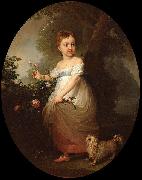 |
Vladimir Lukich Borovikovsky
|
|
(Russian: July 24 O.S. 1757 - April 6 O.S. 1825) was a Ukrainian-born painter who dominated Russian portraiture at the turn of the 19th century.
ladimir Borovikovsky was born dymyr Borovyk in Myrhorod (now Ukraine) on July 24, 1757. His father, Luka Borovyk was a Ukrainian Cossack and an amateur icon painter. According to the family tradition, all four of Borovyk's sons served in Myrhorod regiment, but Volodymyr retired early at the rank of poruchik and devoted his life to art mostly icon painting for local churches.
Borovikovsky may have lived the remainder his life as an amateur painter in a provincial town if not for an unexpected event. His friend Vasyl Kapnist was preparing an accommodation for Empress Catherine II in Kremenchuk during her travel to newly conquered Crimea. Kapnist asked Borovikovsky to paint two allegoric paintings (Peter I of Russia and Catherine II as peasants sowing seeds and Catherine II as a Minerva) for her rooms. The paintings so pleased the Empress that she requested that the painter move to Saint Petersburg.
Portrait of Maria Lopukhina, 1797After September 1788 Borovikovsky lived in Saint Petersburg where he changed his surname from the Cossack "Borovyk" to the more aristocratic-sounding "Borovikovsky". For his first ten years in Saint Petersburg, he lived in the house of the poet, architect, musician and art theorist, Prince Nikolay Lvov, whose ideas strongly influenced Borovikovsky's art. At 30-years-old, he was too old to attend Imperial Academy of Arts, so he took private lessons from Dmitry Levitzky and later from Austrian painter Johann Baptist Lampi. |
|
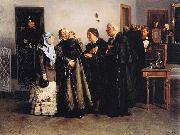 |
Vladimir Makovsky
|
|
(Russian: 26 January (greg.: 7 February) 1846, Moscow - 21 February 1920, Petrograd) was a Russian painter, art collector, and teacher.
Portrait by Vladimir Makovsky of Empress Maria Fyodorovna. Gatchina Palace, 1885Makovsky was the son of collector, Yegor Ivanovich Makovsky, who was one of the founders of the Moscow Art School. Vladimir had two brothers, Nikolai Makovsky and Konstantin Makovsky, and one sister, Alexandra Makovsky, all of whom were famous painters. Vladimir studied at the Moscow School of Painting, Sculpture, and Architecture. He finished his studies in 1869 and the following year became one of the founding members of the Association of Travelling Art Exhibitions, where his many years of prolific work brought him to a leading position
Makovsky's work was defined by a perpetual humor as well as blatant irony and scorn. During the seventies his paintings dealt primarily with small-town folk. His pictures, "The Grape-juice Seller" (1879), "Fruit-Preserving" (1876) and "The Congratulator" (1878) depict various scenes where the mood is finely conceived and almost laughter-inducing. Other works of his, such as "The Benefactor" (1874) and "The Convict" (1878) are profoundly socially-conscious. In them, Makovsky either criticizes the false sympathy of the aristocracy towards the poor, or draws attention to the oppression and persecution by the tsarist gendarmerie. In 1878, he became an academician.
In the eighties, during the time of Russian "democratic" painting, Makovsky produced some of his most valued works. In 1882, he was made professor at the Moscow Art School after the death of Vasili Perov. Some of Makovsky's greatest works of this period include "In the Ante-room of the Court of Conciliation" (1880), "The Released Prisoner" (1882), and "The Collapse of the Bank" (1881). From the end of the 1880s, Makovsky began to produce more gloomy works. Quintessential works of this period include "You Shall Not Go" (1892), and "On the Boulevard" (1888).
In 1894, Makovsky became Rector of the Preparatory school of the Academy of Art. After the First Russian Revolution, he painted "January 9, 1905, on Vasilyev Island" in which he depicts the armed police firing at defenseless people. In another painting "The Sacrifices on the Khodyn Field" in which a thousand people lost their lives during the coronation ceremony in 1896 of Nicholas II, he again stood uncompromisingly on the side of the oppressed people. After the 1917 October Revolution, Makovsky helped carry over the realist traditions to the early stages of Socialist Realism.
|
|
|
|
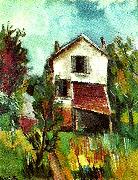 |
vlaminck
|
|
Maurice de Vlaminck (4 April 1876 ?C 11 October 1958) was a French painter. Along with Andre Derain and Henri Matisse he is considered one of the principal figures in the Fauve movement, a group of modern artists who from 1904 to 1908 were united in their use of intense color. |
|
|
|
|
|
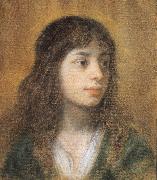 |
Volterrano
|
|
Italian Baroque Era Painter, 1611-ca.1690 |
|
|
|
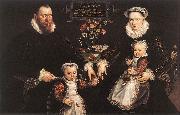 |
VOS, Marten de
|
|
Flemish painter (b. 1532, Antwerpen, d. 1603, Antwerpen). |
|
|
|
|
|
|
|
|
|
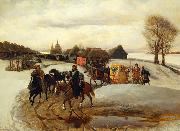 |
Vyacheslav Schwarz
|
|
painted The Spring Pilgrimage of the Tsarina, under Tsar Aleksy Mihailovich in 1868 |
|
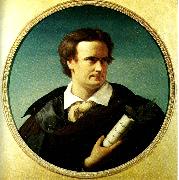 |
w. von schadow
|
|
Friedrich Wilhelm Schadow (7 September 1789 - 19 March 1862) was a German Romantic painter.
He was born in Berlin and was the second son of the sculptor Johann Gottfried Schadow.
In 1806-1807 Friedrich served as a soldier. In 1810 he traveled with his elder brother Rudolph to Rome where he became one of the leaders among painters of the Nazarene movement. Following the example of Johann Friedrich Overbeck and others, he joined the Roman Catholic Church, and held that an artist must believe and live out the truths he essays to paint. The sequel showed that Schadow was qualified to shine more as a teacher and mentor than as a painter. As an author, he is best known for his lecture, Ueber den Einfluss des Christentums auf die bildende Kunst (About The Influence of Christianity On The Visual Arts) (Dusseldorf, 1843), and the biographical sketches, Der moderne Vasari (Berlin, 1854).
In Rome, Schadow was given one of his first major commissions when the Prussian Consul-General, General Jakob Salomon Bartholdy, befriended the young painter, and asked him and three young compatriots (Cornelius, Overbeck and Veit) to decorate in fresco a room in his house on the Pincian Hill. The overall theme selected was the story of Joseph and his brethren, and two scenes, the Bloody Coat and Joseph in Prison, were conferred on Schadow. In 1819, Schadow was appointed professor in the prestigious Berlin Academy of the Arts, and his ability and thorough training gained many devoted disciples.
It was during this period that Schadow developed his paintings for churches. In 1826, Professor Schadow was made director of the Dusseldorf Academy of the Arts, which he reoriented towards the production of Christian art, though he began a major dispute with one of its professors, Heinrich Christoph Kolbe, ending in the latter leaving the Academy in 1832. In 1837, Schadow selected, at request, those of his students best qualified to decorate the chapel of St Apollinaris on the Rhine with frescoes. When finished, they were acclaimed as the fullest and purest manifestation of the spiritual side of the D??sseldorf school. One of his famous students, Heinrich Mucke, carried on the liturgical art with emphasis both in painting and frescoes. The painting of the Wise and Foolish Virgins. considered one of his masterworks, was commissioned in 1842. Now in the Städel Museum, this large and important picture, while carefully considered and rendered, it however lacks power of some of his other works.
Schadow's fame rests less on his own artistic creations than on the school he formed. In D??sseldorf a reaction set in against the spiritual and sacerdotal style he had established and, in 1859, the party of naturalism, after a severe struggle, drove Director Schadow from his chair. Friedrich Wilhelm Schadow died at Dusseldorf in 1862, and a monument was erected in the square which bears his name at a jubilee held to commemorate his directorate.
The D??sseldorf School that Schadow directed became internationally renowned, attracting such American painters as George Caleb Bingham, Eastman Johnson, Worthington Whittredge, Richard Caton Woodville, William Stanley Haseltine, James M. Hart, and William Morris Hunt and producing the German emigre Emmanuel Leutze. |
|
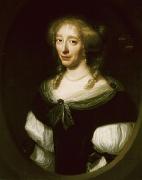 |
Wallerant Vaillant
|
|
Wallerant Vaillant, (Lille 30 May 1623 - Amsterdam 28 August 1677), was a painter of the Dutch Golden Age and one of the first artists to use the mezzotint technique, which he probably helped to develop.
Wallerant Vaillant was the oldest of five brothers, who all became successful painters.
Jacques (1625 - 1691) traveled to Italy where he joined the Bentvueghels in Rome with the nickname Leeuwrik, and settled later in Berlin.
Jan (1627 - 1668+) was an engraver considered to be a member of the school of Frankenthal and later became a merchant in Frankfurt.
Bernard (1632 - 1698) accompanied Wallerant on all of his travels, and settled later in Rotterdam, where he became deacon of the Wallonian Church.
Andreas (1655 - 1693), the youngest, became an engraver in Paris, and died in Berlin visiting his brother Jacques.
It is said Wallerant was a student of Erasmus Quellinus II (1607 - 1678) in Antwerp. He moved with his parents in 1643 to Amsterdam. In 1647 he lived in Middelburg, but in 1649 he was back in Amsterdam. In 1658 he traveled with his brother to Frankfurt and Heidelberg. He helped invent the Mezzotint technique (schraapkunst, or zwartekunst) with Prince Rupert of the Rhine when he was his tutor performing experiments in etching techniques. In 1659 he went to Paris with Philibert de Gramont where he stayed five years.
|
|
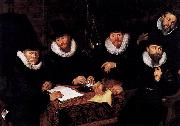 |
Werner van den Valckert
|
|
Though he was born in Amsterdam, he became a member of the Guild of St. Luke in the Hague between 1600 - 1605. By 1614 he had moved to Amsterdam, because his daughter was baptized there. His earliest dated etchings are from 1612. His surviving paintings are historical allegories and portraits. He also made a prestigious schutterstuk, which features the Amsterdam burgermeester Albert Burgh.
According to Houbraken, he was a student of Hendrik Goltzius. He painted a series of 4 paintings showing a doctor as angel, Christ, a man, and the devil; these were all based on engravings by Goltzius. These paintings are now in the possession of the Boerhaave Museum, which has other similar series on display. |
|
|
|
|
|
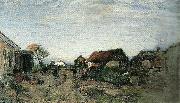 |
wilhelm von gegerfelt
|
|
född 9 november 1844 i Göteborg, död 1920, målare, son till arkitekten Victor von Gegerfelt.
von Gegerfelt studerade 1861-63 vid konstakademien i Köpenhamn, 1864-67 vid akademien i Stockholm och 1867-72 i D??sseldorf, varefter han överflyttade till Paris. Där arbetade han sig till en helt ny teknik och blev jämte Alfred Wahlberg den förste svenske representanten för det moderna stämningslandskapet. Han gjorde studieresor till Frankrikes nordkust, till hemlandet och till Italien, målade skymning över Venedigs kajer, månsken över lagunerna, kritklippor vid Engelska kanalen i gråstämning, svenska sommarnätter, allt med elegant pensel, smekande färg och livligt föredrag. Gegerfelt är representerad på Nationalmuseum av Stormen (akvarell, motiv från Dalarna, inköpt 1886) och Strand på Hallands Väderö (i olja, 1893) samt på Göteborgs konstmuseum av Strandgata i Venezia (1884), oljemålningen Vinterafton på Hallands Väderö (1893) samt akvarellen Fjällbacka. |
|
|
|
|
|
|
|
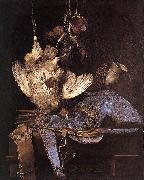 |
Willem van
|
|
Dutch Baroque Era Painter, 1627-ca.1683 |
|
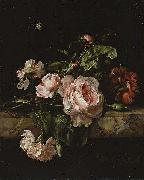 |
Willem van Aelst
|
|
(May 16, 1627 - in or after 1683) was a Dutch artist who specialized in still-life painting with flowers or game.
Van Aelst was born in Delft to a family of prominent city magistrates. He learned to paint from his uncle, the still-life painter Evert van Aelst. On 9 November 1643 he enrolled as a master of the Guild of Saint Luke at Delft.
Between 1645 and 1649 he lived in France. In 1649 Van Aelst travelled to Florence, where he served as court painter to Ferdinando II de' Medici, grand duke of Tuscany. At this time, the grand duke also employed two fellow Dutchmen Matthias Withoos and Otto Marseus van Schrieck, the latter also a still-life painter who probably influenced Van Aelst's style.
In 1656 he returned to the Netherlands to settle permanently in Amsterdam. He became one of the most prominent still-life painters of his generation, which allowed him to live on the Prinsengracht. He must have at Amsterdam died in 1683 or shortly thereafter, as his latest dated work is from that year. Van Aelst taught Rachel Ruysch and several others.
|
|
 |
Willem van Bemmel
|
|
(Utrecht 10 June 1630 - Nuremberg 20 December 1708), was a Dutch Golden Age painter active in Germany.
Van Bemmel was a student of Herman Saftleven in Utrecht. He made a Grand Tour to Rome, spending first the years 1647-9 in Venice where he became famous for his landscapes. He stayed in Rome for six years and was a member of the Bentvueghels. From Rome he crossed the Alps to Nuremberg, where he became a successful painter of Italianate landscapes.
In 1656 he moved to Kassel. He was the father of the German Von Bemmel painting family.
|
|
 |
willem van de velde the younger
|
|
(bapt. 18 December 1633 - 6 April 1707) was a Dutch marine painter.
Willem van de Velde was baptised on 18 December 1633 in Leiden, Holland, Dutch Republic.
A son of Willem van de Velde the Elder, also a painter of sea-pieces, Willem van de Velde, the younger, was instructed by his father, and afterwards by Simon de Vlieger, a marine painter of repute at the time, and had achieved great celebrity by his art before he came to London. In 1673 he moved to England, where he was engaged by Charles II, at a salary of £100, to aid his father in taking and making draughts of sea-fights, his part of the work being to reproduce in color the drawings of the elder van de Velde. He was also patronized by the Duke of York and by various members of the nobility.
He died on 6 April 1707 in London, England. |
|
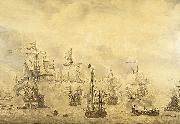 |
Willem van de Velde the Elder
|
|
(c. 1611 - 13 December 1693) was a Dutch Golden Age seascape painter.
Willem van de Velde, known as the Elder, a marine draughtsman and painter, was born in Leiden, the son of a Flemish skipper, Willem Willemsz. van de Velde, and is commonly said to have been bred to the sea. In 1706 Bainbrigg Buckeridge noted that he eunderstood navigation very welle. He married Judith Adriaensdochter van Leeuwen in Leiden, the Netherlands, in 1631.
His three known legitimate children were named Magdalena, born 1632; Willem, known as the Younger, also a marine painter, born 1633; and Adriaen, a landscape painter, born 1636.
His marriage was stormy, at least in its later years. David Cordingly relates that Willem the Elder fathered two children out of wedlock in 1653, one eby his maidservant, and the other by her friend. Nine years later the Elder and his wife went through a legal separation, eon account of legal disputes and the most violent quarrelse. The immediate cause of the dispute was his affair with a married woman.e Michael S. Robinson noted that eon 17/27 July 1662, he and his wife agreed to part. A condition of the separation was that the Elder could recover from his son Adriaen etwo royal giftse, presumably gifts from Charles II for work done in England.e Cordinglyes account further relates that the dispute was still continuing after another ten years, since ein the autumn of 1672 Judith complained to the womanes husband.e Robinson adds that by 1674 the couple emust have been reconcilede, for at a chance meeting with Pieter Blaeu in Amsterdam in July the Elder explained that he was only visiting for a few days ein order to fetch his wifee. His son, Adriaen, had died in Amsterdam in 1672, and Willem the Elder was also fetching his grandson, similarly named Adriaen, who was then aged two.
After his move to England, the exact date of which is uncertain, but reportedly at the end of 1672 or beginning of 1673, he is said to have lived with his family in East Lane, Greenwich, and to have used the Queenes House, now part of the National Maritime Museum in Greenwich, as a studio. Following the accession of William and Mary as King and Queen of England, it appears that this facility was no longer provided, and by 1691 he was living in Sackville Street, now close to Piccadilly Circus. He died in London, and was buried in St Jameses Church, at the south end of the street.
|
|
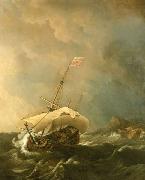 |
Willem Van de Velde The Younger
|
|
(bapt. 18 December 1633 - 6 April 1707) was a Dutch marine painter.
Willem van de Velde was baptised on 18 December 1633 in Leiden, Holland, Dutch Republic.
A son of Willem van de Velde the Elder, also a painter of sea-pieces, Willem van de Velde, the younger, was instructed by his father, and afterwards by Simon de Vlieger, a marine painter of repute at the time, and had achieved great celebrity by his art before he came to London. In 1673 he moved to England, where he was engaged by Charles II, at a salary of £100, to aid his father in "taking and making draughts of sea-fights", his part of the work being to reproduce in color the drawings of the elder van de Velde. He was also patronized by the Duke of York and by various members of the nobility.
He died on 6 April 1707 in London, England. |
|
|
|
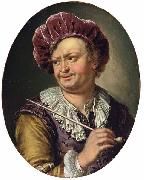 |
Willem van Mieris
|
|
(3 June 1662, Leiden - 26 January 1747, Leiden) was a Dutch painter. He was a son of Frans van Mieris sr. and brother of Jan van Mieris.
His works are extremely numerous, being partly imitations of the paternal subjects, or mythological episodes, which Frans habitually avoided. In no case did he come near the excellence of his sire.
van Mieris has works in the Victoria and Albert Museum as well as Cheltenham and Derby Museum and Art Gallery
|
|
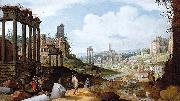 |
Willem van Nieulandt
|
|
(1584-1635) was a Dutch Golden Age painter and engraver from Antwerp.
His father Adrien van Nieulandt the elder was born to a family of artists of Flemish origin from Antwerp. He probably moved with his family to Amsterdam in 1589 after the Siege of Antwerp, because they were Protestants. His three sons Willem van Nieulandt II (named for his uncle, also a painter), Adriaen van Nieulandt the younger, and Jacob van Nieulandt all became painters.
According to Houbraken, Willem was a pupil of Roelant Savery in Amsterdam, and he left him to travel to Rome, where he became a student of Paulus Bril. He specialized in painting artistic ruins of monuments, arches, and temples, many of which he then engraved himself. He returned to Amsterdam (via Antwerp) in 1607, and became a respected poet there as well as Italianate painter.
|
|
|
|
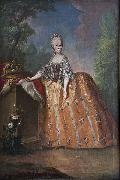 |
Workshop of Anton von Maron
|
|
Anton von Maron (January 8, 1733 - March 3, 1808) was an Austrian painter, active in Rome.
Von Maron was born in Vienna, but moved at a young age to Rome. There, he studied under Anton Raphael Mengs, and became an accomplished portrait painter. He married a sister of Mengs, Therese Maron, who was a painter in her own right. He lived the rest of his life in Rome, and died there in 1808. |
|
|
|
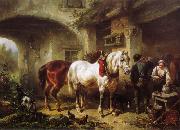 |
Wouterus Verschuur
|
|
(11 June 1812 - 4 July 1874) was a Dutch painter of animal subjects - mainly horses - and of landscapes. He is one of the later representatives of Romanticism in Dutch art.
Born to an Amsterdam jeweller, Verschuur received his training from the landscape and cattle painters Pieter Gerardus van Os and Cornelis Steffelaar. As part of this education Verschuur had to copy works by the 17th century painter Philips Wouwerman, like Wouwerman Verschuures subjects consist mostly of stable scenes, landscapes with horses and coastal landscapes.
Showing talent from an early age, at 15 Verschuur had a painting exhibited at the eExhibition of Living Masterse at Amsterdam in 1828. In 1832 and 1833 he won the gold medal at the annual exhibition at Felix Meritis. In 1833 he was appointed a member of the Royal Academy in Amsterdam. In 1839 he joined the artistse society, Arti et Amicitiae. His reputation was also considerable abroad. He was often featured in the annual exhibitions which travelled the large European cities at that time. In 1855 Napoleon III purchased one of his paintings at the Exposition Universelle in Paris.
The popularity of his paintings provided him with sufficient funds to travel widely. He made frequent trips to Gelderland and Brabant and abroad to Switzerland and Germany. In 1874, on one of his trips to Gelderland, he died on July 4 in the town of Vorden. He left behind an oevre of about 400 paintings and over 2000 drawings. Amongst his students were his son, Wouterus Verschuur Jr. and Anton Mauve.
|
|
|
|
|







